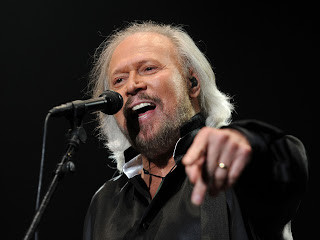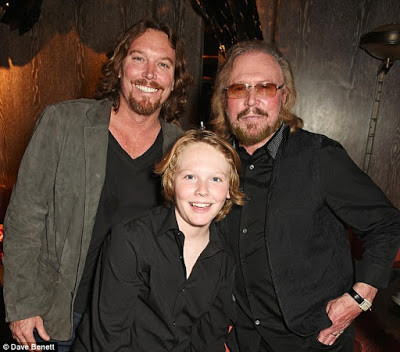Barry Gibb, the legendary voice behind the Bee Gees, recently released his new album In The Now, proving his enduring musical talent. This comes as a timely reminder of the Bee Gees’ incredible legacy, particularly as we celebrate the anniversary of their iconic hit, “You Should Be Dancing.” This track isn’t just a song; it’s a cultural phenomenon that continues to fill dance floors worldwide. But what’s the story behind this disco anthem, and why are the Lyrics You Should Be Dancing The Bee Gees penned still so irresistible?
The Birth of a Dance Floor Classic
In a recent interview, Barry Gibb himself shared fascinating insights into the creation of “You Should Be Dancing.” It wasn’t a song that came easily; Gibb revealed that they recorded the track “at least four times,” meticulously refining it over two weeks to achieve its signature sound. This dedication to perfection is evident in every layer of the song, from the infectious rhythm to the intricate vocal harmonies.
The Miami environment also played a crucial role in shaping the song’s direction. Living in a city infused with Latin rhythms, the Bee Gees naturally incorporated these influences, contributing to the song’s vibrant and energetic feel. This blend of disco with Latin percussion gave “You Should Be Dancing” a unique edge that resonated with audiences globally. The song wasn’t just about dancing; it was a celebration of rhythm and movement, deeply rooted in the cultural landscape of Miami in the 1970s.
Unpacking the Layers of “You Should Be Dancing”
What makes “You Should Be Dancing” stand out is its incredible sonic depth. Barry Gibb highlights the experimental nature of the recording process, emphasizing that the availability of numerous recording tracks allowed them to constantly “add something else that made it unusual.” This experimentation led to surprising elements within the mix, such as Barry Gibb’s own falsetto vocal doubling the trumpet solo – a detail often missed when listening to the full track.
This meticulous layering extended to the percussion, famously featuring Stephen Stills of Crosby, Stills & Nash. Gibb recalls Stills contributing percussion at 5 am, highlighting the passionate and sometimes unconventional recording sessions. The sheer number of percussion layers, reportedly around 16, creates a rich rhythmic tapestry that compels listeners to move. Even Maurice Gibb’s bassline is noteworthy, with Barry suggesting it would have impressed even bass legends like Bernard Edwards of Chic.
The mixing process itself was a testament to the technology of the time and the collaborative spirit of the team. Gibb describes “10 of us to mix that song,” working simultaneously on a console with no ability to save or update individual elements. Each mix was a live performance in itself, requiring perfect coordination. Barry Gibb’s specific role in the mix was controlling the echo repeat on the line “Whatcha’ doin’ on ya’ back?,” a subtle but crucial element in the song’s overall texture.
Why These Lyrics Make You Want to Dance
The lyrics you should be dancing the bee gees crafted are simple yet powerfully effective. They are an invitation, a direct command to join the celebration of movement and music. The repetition of phrases like “You should be dancing, yeah” and “Dancing, yeah” is hypnotic, creating an irresistible urge to get up and move.
While the lyrics are not complex narratives, they perfectly capture the essence of disco – freedom, joy, and letting loose on the dance floor. The song isn’t about deep introspection; it’s about immediate physical expression. Lines like “Whatcha doin’ on ya’ back?” and “Get movin’, get groovin’ tonight” are direct and encouraging, eliminating any hesitation and pushing listeners to embrace the rhythm.
A Timeless Call to the Dance Floor
Barry Gibb acknowledges that predicting a song’s success is almost impossible. However, with “You Should Be Dancing,” there was a palpable sense of something “special.” He likens the inspiration to artists admiring others and wanting to create something in a similar vein, referencing Paul McCartney’s admiration for the Beach Boys. The Bee Gees, witnessing the burgeoning dance craze, aimed to create a record that embodied that energy, and they succeeded spectacularly.
“You Should Be Dancing” became more than just a hit song; it became an anthem for a generation and continues to transcend time. Its enduring appeal lies in its infectious rhythm, its meticulously crafted soundscape, and its simple yet compelling invitation to dance. The lyrics you should be dancing the bee gees provided are not just words; they are a timeless call to joy and movement, ensuring that this Bee Gees classic will continue to fill dance floors for generations to come. So, put on “You Should Be Dancing,” feel the rhythm, and let the Bee Gees’ magic move you.


